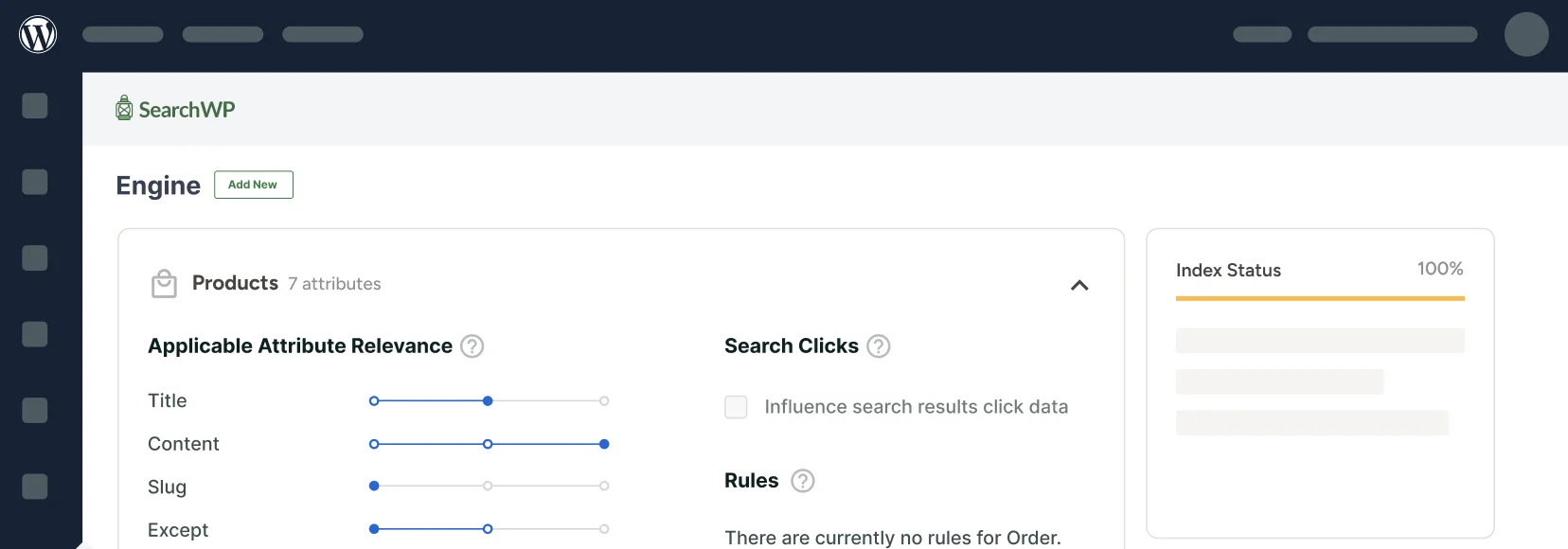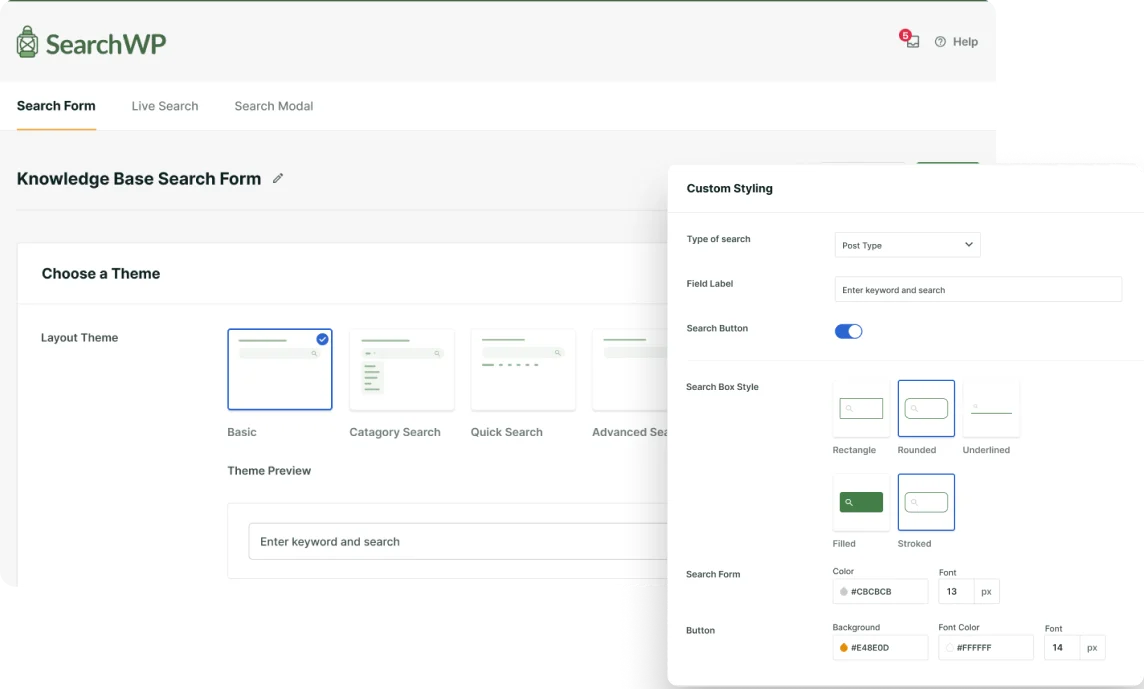
When it comes to creating custom WordPress search pages, Elementor is amongst the best tools to use.
However, with the default WordPress search has a lot of limitations. For instance, you cannot include custom fields, categories, tags, authors, product details, and more in the search process.
This is where a search plugin like SearchWP comes in handy. It enhances your website search and helps visitors find what they’re looking for with ease.
So, do you want to know how to use SearchWP with Elementor to boost your site search?
In this article, we’ll show you 4 ways how you can use SearchWP to help your visitors get more relevant search results.
Since this is a huge and detailed guide, here is a table of contents to help you navigate through it:
- What is SearchWP and Why Use It
- How to Install SearchWP on Your WordPress Site
- How to Add a Custom Search Widget to Elementor
- How to Help Your Visitors Find the Right Content Faster
- How to Display Live Search Results on Your Elementor Site
- How to Customize Your Elementor Search Results Page
Let’s dive into it!
What is SearchWP and Why Use It
SearchWP is the best WordPress search plugin on the market, with over 50,000 active installs.

It comes with many useful features that you can use to make search on your site way smarter.
The thing is that one of WordPress’s weaknesses has always been its search functionality. It ignores a lot of valuable data when performing searches and doesn’t give you any way to customize how the search works.
This results in your visitors often not finding what they’re looking for and leaving your site unsatisfied.
Here’s where SearchWP comes to the rescue. Using this plugin, you can make searchable almost anything on your site.
This list includes custom post types, custom fields, post tags, categories, and other data you want to consider.
SearchWP also allows you to completely customize how search works on your site. For example, you can exclude any pages from search results, limit search to specific content, and many more.
This way, you can make it easier for your visitor to find the right content and improve their user experience.
Here are some other SearchWP features that’ll help you to boost your search:
- Multiple search engines: Would you like to create a custom search field? With SearchWP, you can create supplemental search engines with unique settings and link them to individual search fields.
- WooCommerce integration: Are you selling online using WooCommerce? SearchWP has seamless integration with this plugin to make your search better and boost your sales right away.
- Search activity tracking: SearchWP collects data on any search activity on your site so you can get new content ideas and better understand your audience.
- Fuzzy search: Want to enrich your search results? With SearchWP’s fuzzy search feature, you can make WordPress search for partial matches when there are no exact ones.
How to Install SearchWP on Your WordPress Site
Now that you know why SearchWP is the best search plugin, let’s see how you can install it on your website.
To begin, you’ll need to get your copy of the Search by visiting the website and signing up for a new account.
After that, you can log into your SearchWP account and navigate to the Downloads section.
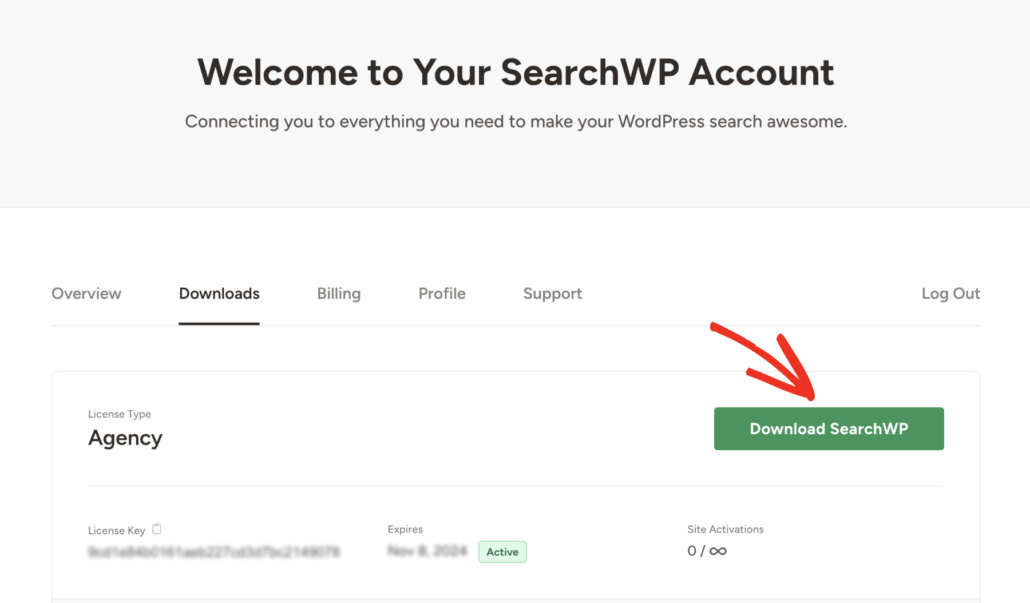
Once there, click the Download SearchWP button to download the SearchWP plugin’s ZIP file to your computer.
We also recommend copying the license key in the bottom left corner of the same page. You’ll need this key to activate your plugin’s copy later.
The next step is to install SearchWP. Simply upload the plugin’s ZIP file to your site to do that. Need a refresher on how to do that? You can follow the how to install a WordPress plugin step-by-step tutorial.
Once the plugin is active, you’ll see the SearchWP welcome screen and the setup wizard. You can click the ‘Start Onboarding Wizard’ button and follow the onscreen instructions.
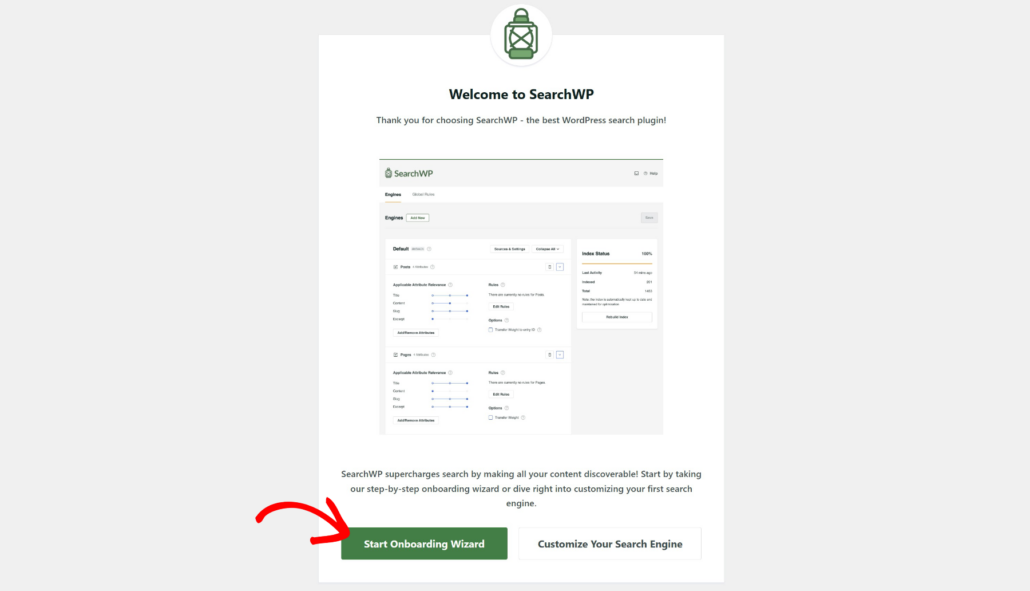
Now, you’re ready to start boosting search on your site.
1. How to Add a Custom Search Widget to Elementor
Using SearchWP and Elementor, you can add a custom search widget to your pages.
It will help your visitors to discover more of your content and allow you to get more pageviews.
To get started, navigate to the Pages tab in your WordPress dashboard.
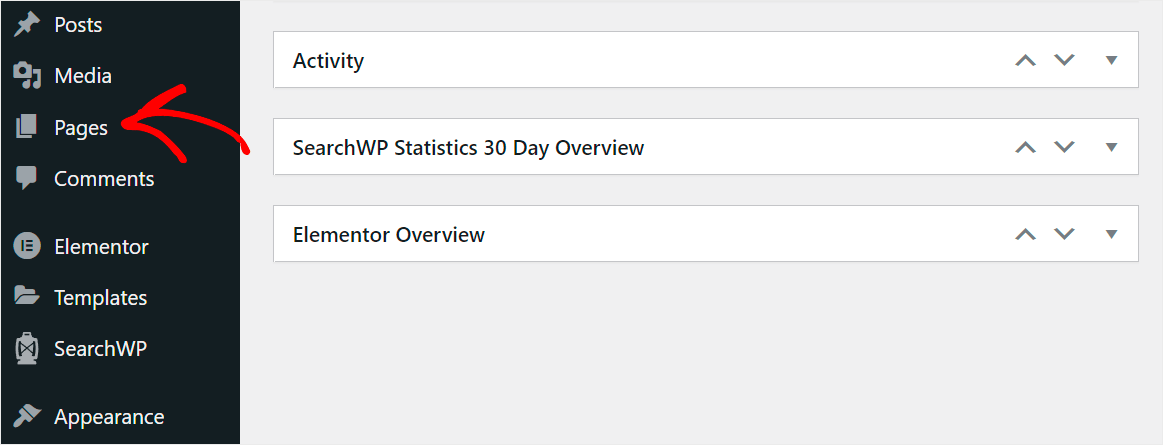
Next, you will see all the pages on your site.
Go ahead and hover your cursor over the page to which you want to add the search form and click Edit with Elementor.
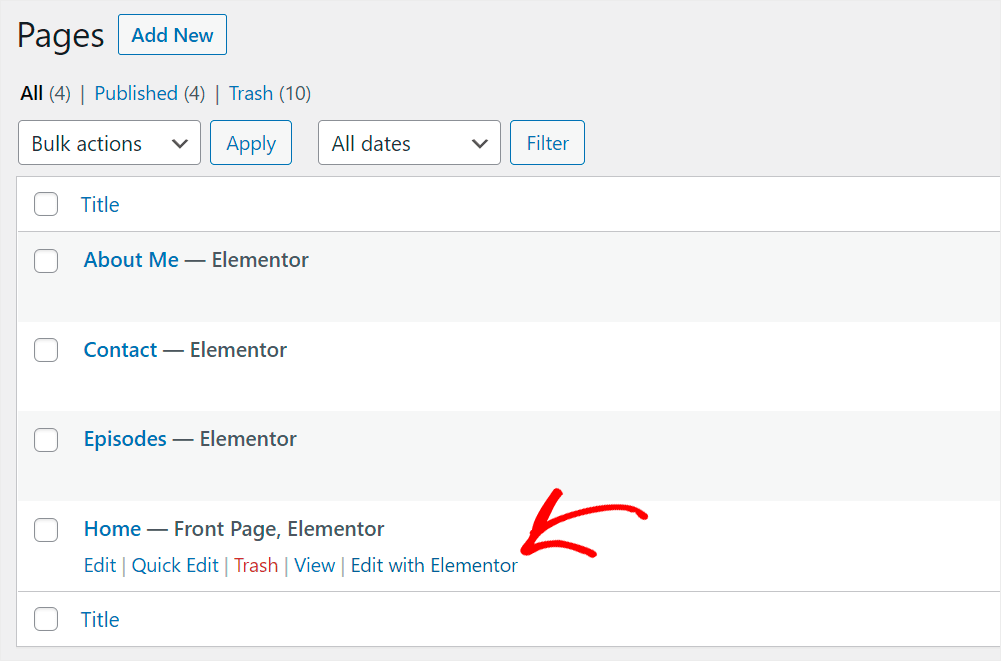
Once you get to the Elementor editor, you can add a search form to your page.
Simply head to the SearchWP section from the panel on the left and look for the SearchWP Form widget.
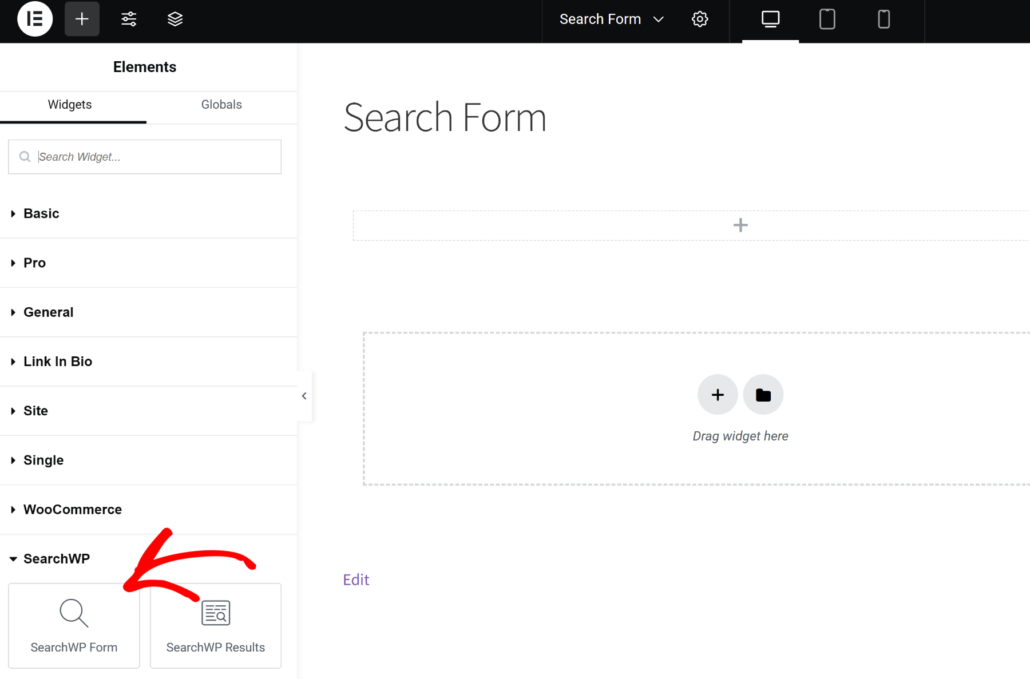
Then drag this widget to the place on your page where you want to add the search form.
After that, you can select a search form from the dropdown menu.
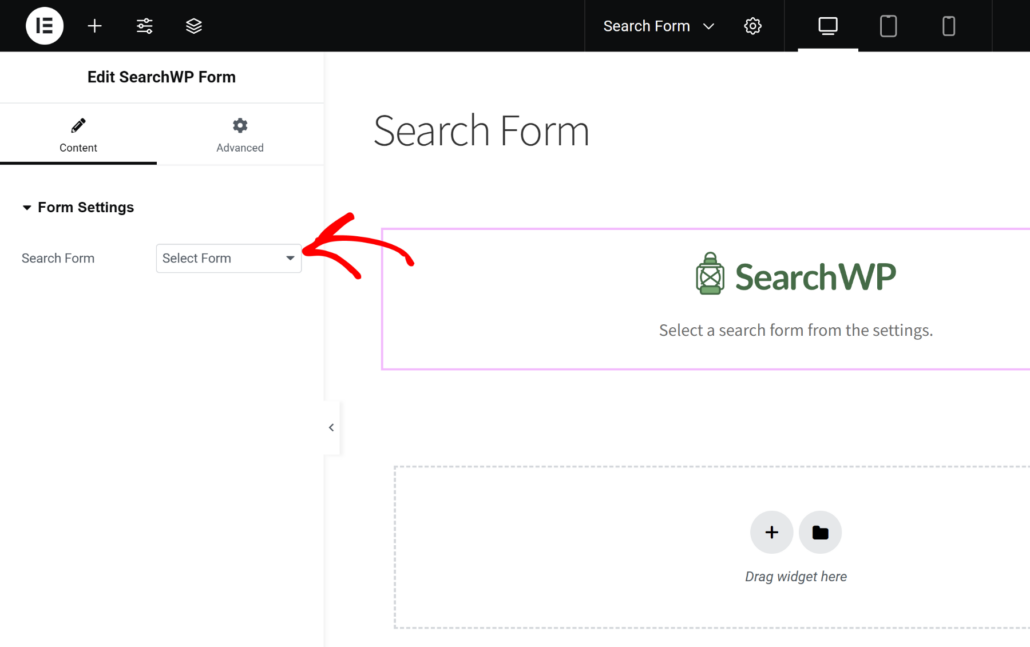
When you’ve finished, save your Elementor page.
To learn more, please see our guide on how to add a search box to Elementor.
2. How to Help Your Visitors Find the Right Content Faster
SearchWP has seamless integration with Elementor and automatically connects to every existing search field on your site.
So, after you add a search widget to your page, you’re ready to customize search on your site.
Customize Your Search Engine
To begin, you can go to SearchWP » Algorithm from your WordPress dashboard. Here you can find the search engine created with SearchWP.
At the moment, you’ll see that there is a single search engine called Default. SearchWP automatically creates it after the plugin installation.
By customizing the Default search engine settings, you can modify how searches work on your site. For example, you can edit the set of search sources, manage the list of applicable attributes, and much more.
In addition, SearchWP allows you to add supplemental search engines and link them to specific search forms. This way, you can create custom search fields with unique settings and place them anywhere on your site.
Let’s say we want to help our visitors find what they’re looking for faster by using any search field on our site. We’ll need to set up the Default search engine to do that.
To begin, click the Sources & Settings button at the top right corner of the Default search engine section.
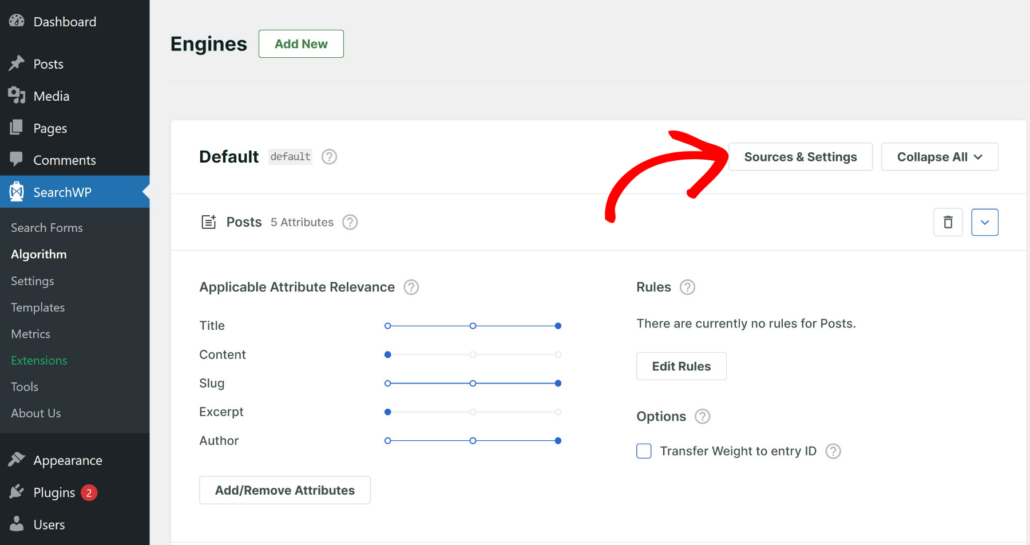
After that, you’ll see a pop-up where you can add or remove search sources.
By default, the Posts, Pages, and Media sources will be selected.
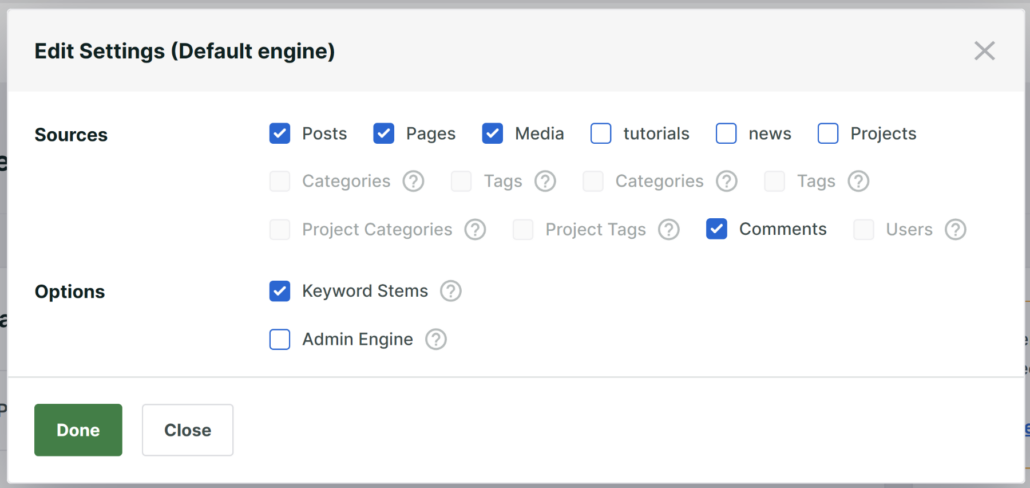
However, you can choose which sources to choose and limit the search on your site
When you’re finished managing your search sources, press Done to save the changes.
Another way to make search on your site smarter is to enable search by post custom fields, tags, and categories.
To get started, simply click on the Add/Remove Attributes button under Posts source.
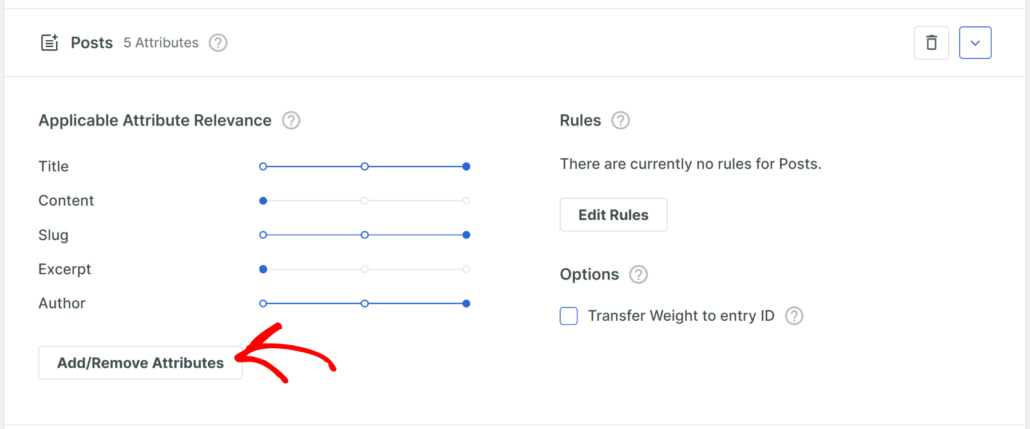
Here you can manage post attributes that WordPress considers when performing searches.
Post attributes are additional data that you can add to make it easier for your visitors to find the more relevant content. For example, it can be tags, custom fields, and more.
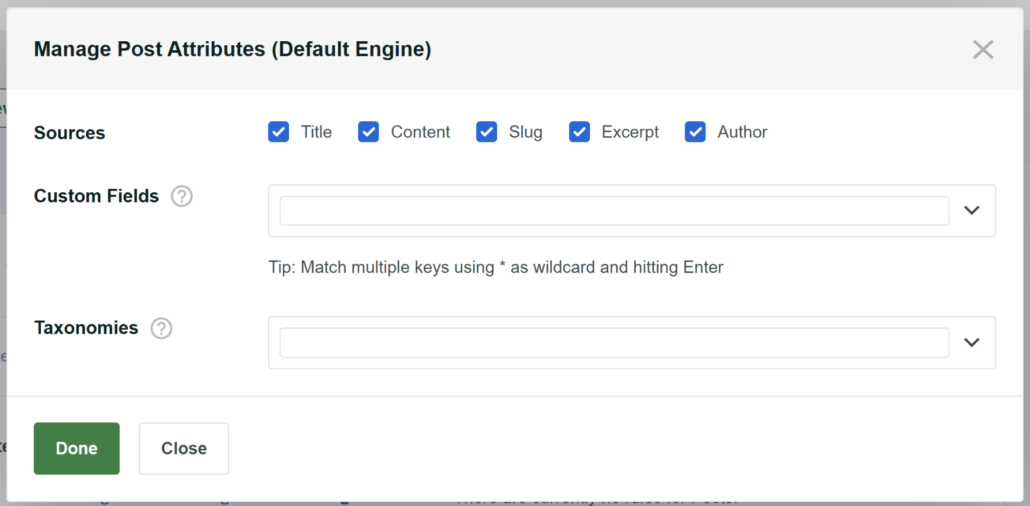
Let’s say you’re using the Advanced Custom Fields plugin and added custom fields.
To make them searchable, you can simply click the Custom Fields dropdown menu and select the fields you want to make searchable.
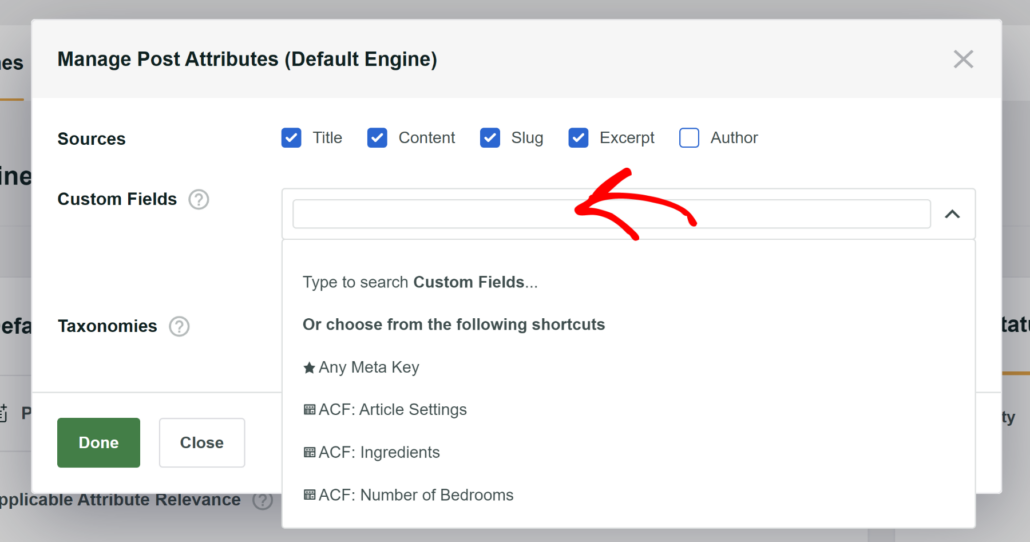
You can find more details by following our guide on how to add custom fields search in WordPress.
When you’re finished managing searchable custom fields and taxonomies, press Done to save all your changes.
SearchWP also allows you to control the relevance weight of attributes by moving the slider next to them to the left or right. The further right the slider, the more importance or relevance that particular Attribute will be given in the search algorithm.
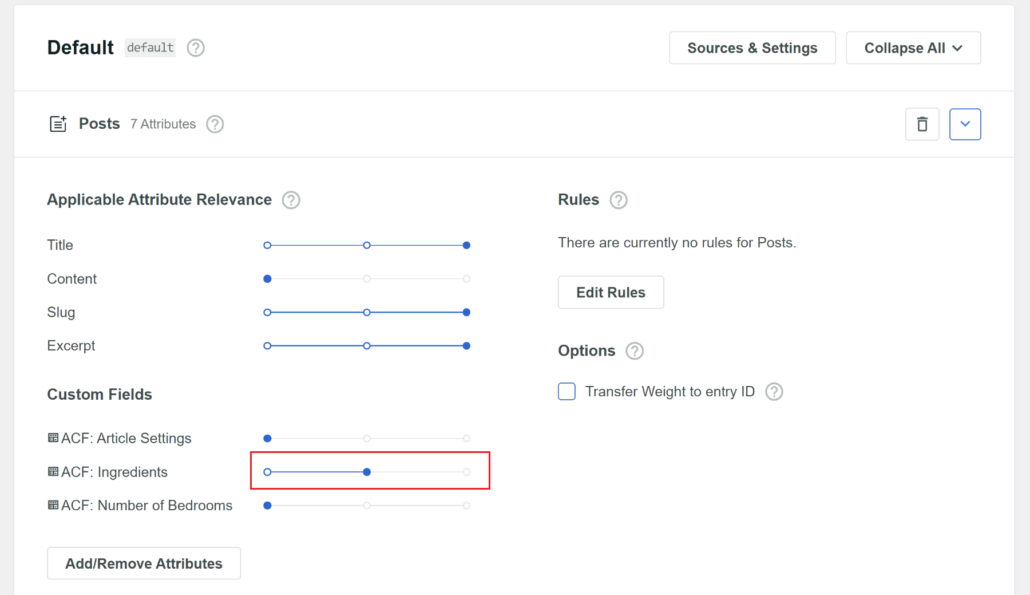
Once you’re happy with how you customized your search engine, simply scroll to the top of the page.
From here, you can press the Save button at the top right.
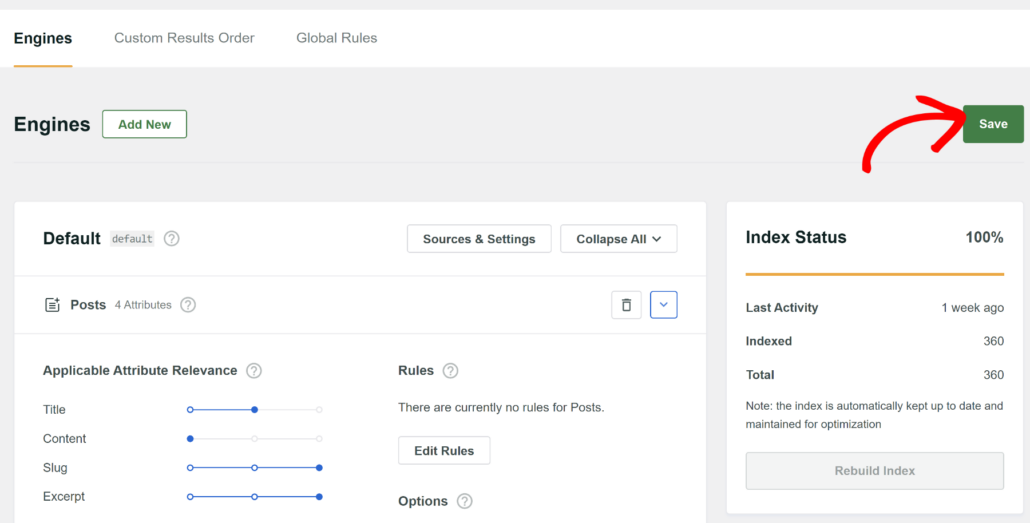
Now, the post search on your site is a lot smarter.
But, you can make it start delivering even more relevant search results to your visitors.
Exclude Specific Pages From Search Results
You can clean up search results on your site to get rid of redundant pages and any other clutter.
Simply hide any pages from appearing in search results on your site by using the SearchWP Exclude UI extension.
The extension adds an option inside the WordPress content editor. You can click the Exclude from SearchWP checkbox to hide any content.
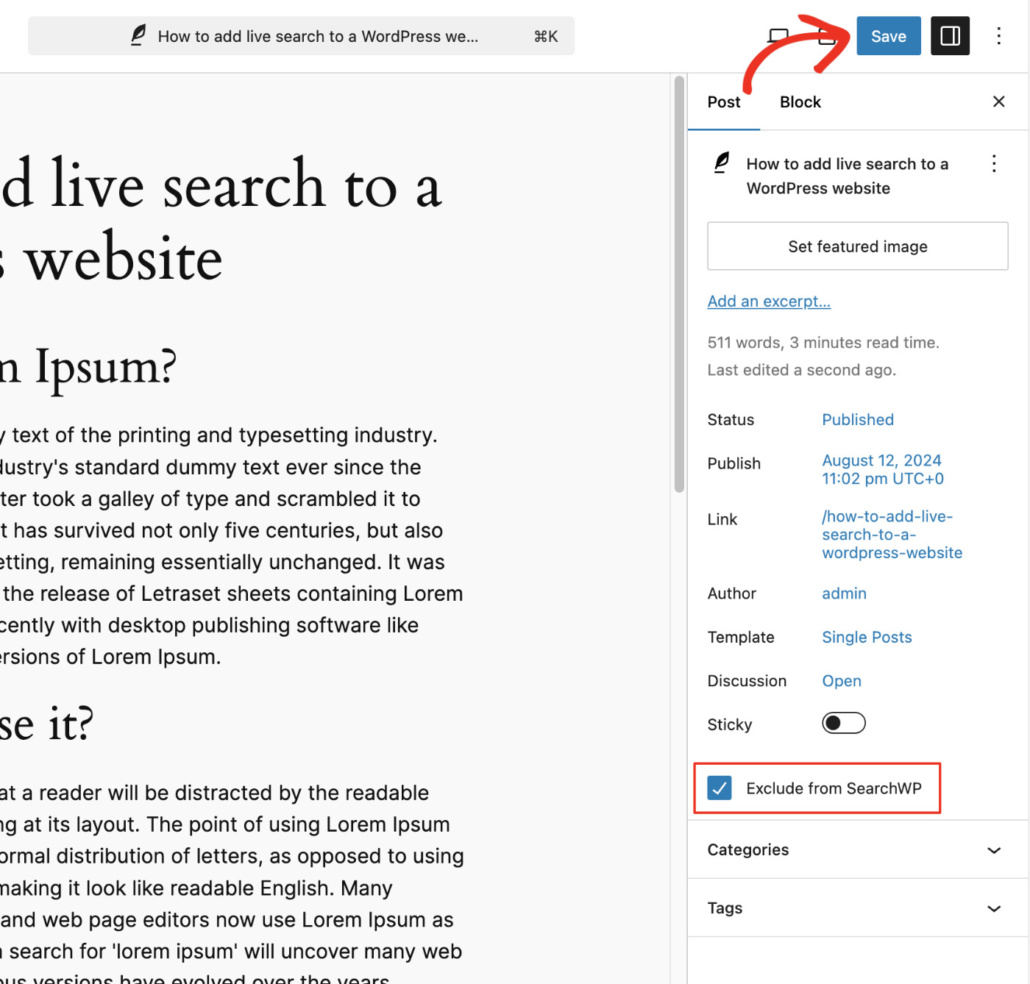
For more information, check out our step-by-step guide on how to exclude specific pages from search results on your site.
Prioritize Specific Pages in Search Results
Another way to give your visitors more relevant search results with SearchWP is to use the Custom Results Order extension.
This extension allows you to change the order of search results on your site.
You can then manually put the most relevant posts or pages at the top of search results for specific keywords.
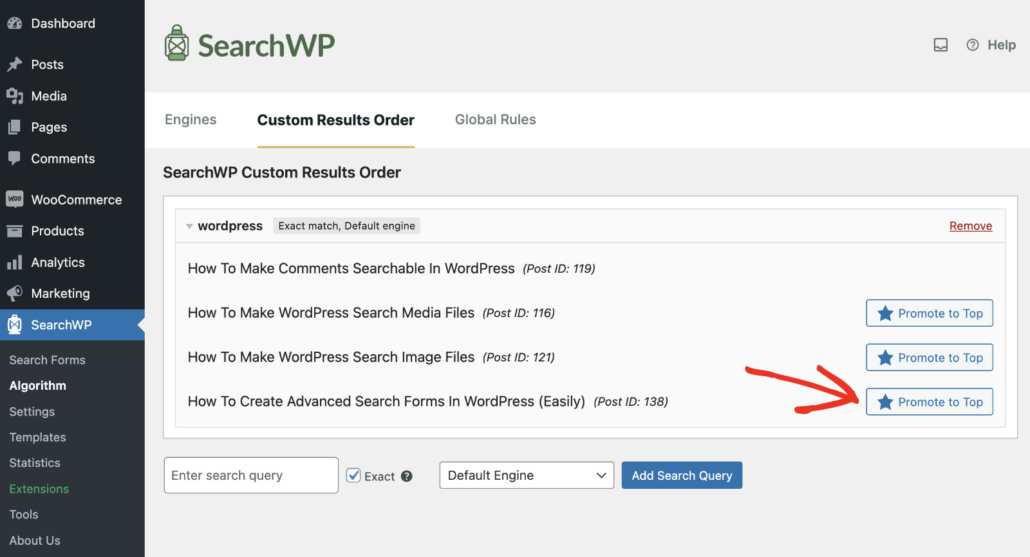
For more details, please follow our step-by-step guide on how to prioritize specific search results in WordPress.
3. How to Display Live Search Results on Your Elementor Site
Live search results are another SearchWP feature that you can use with Elementor to boost search on your site.
By default, WordPress shows search results by opening a new separate page. It’s inconvenient and may confuse your visitors.
With SearchWP live search feature, your visitors will start getting search results instantly without leaving the current page.
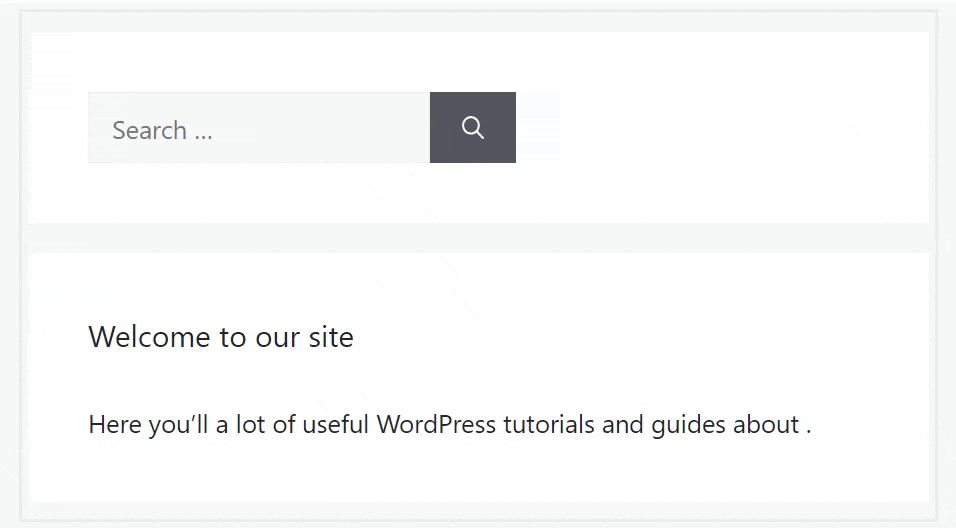
You can learn more by following our guide on how to add live search to WordPress for free.
4. How to Customize Your Elementor Search Results Page
Using Elementor with SearchWP, you can create a custom search results page that’ll help you to get more pageviews.
First, you’ll need to go to SearchWP » Templates from your WordPress dashboard and create a search results template.
Now, you can add a new template or edit an existing one.
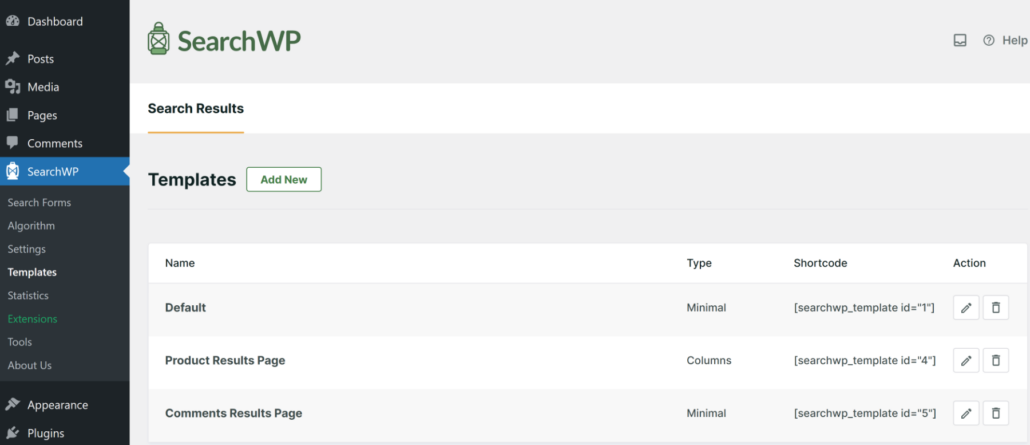
Next, SearchWP will offer different themes for your results page.
Go ahead and select one. You’ll also get to see a preview of the theme under the layouts, which will help you pick the right theme for your results page.
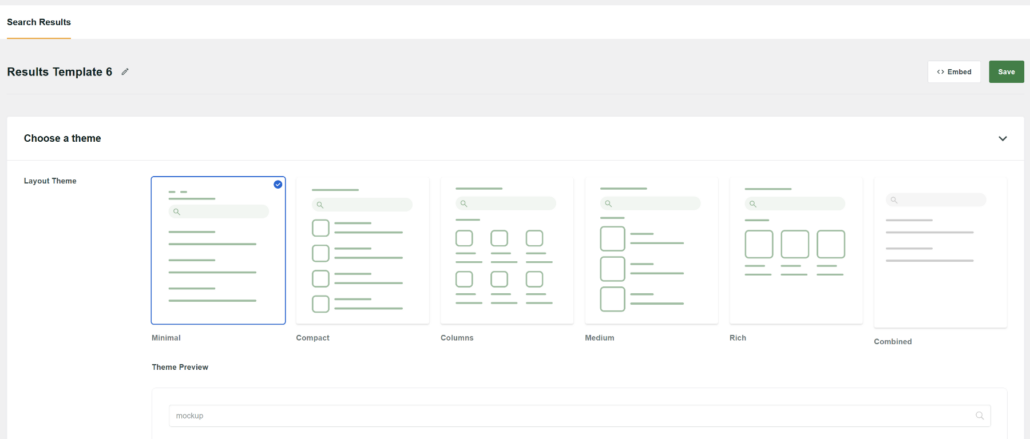
Once that’s done, simply scroll down to the Custom Styling section.
Here, you can further edit the style of your results page.
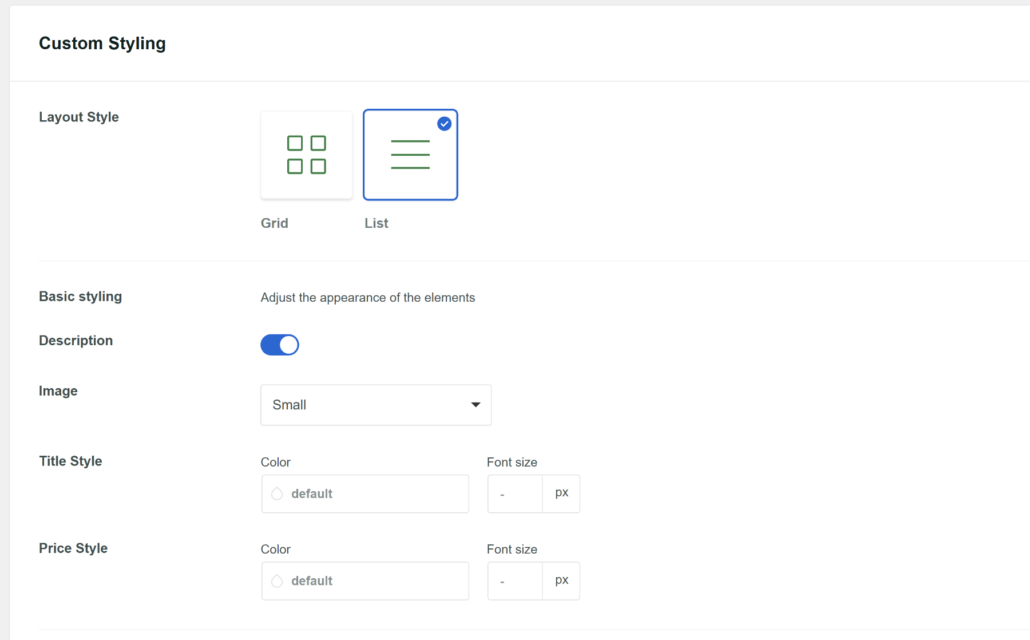
To learn more, please see our guide on how to create a search page in WordPress.
Once the results page template is ready, you can add it using Elementor theme builder.
Next, you can head to the page where you added the SearchWP search form and then click the Edit with Elementor button.
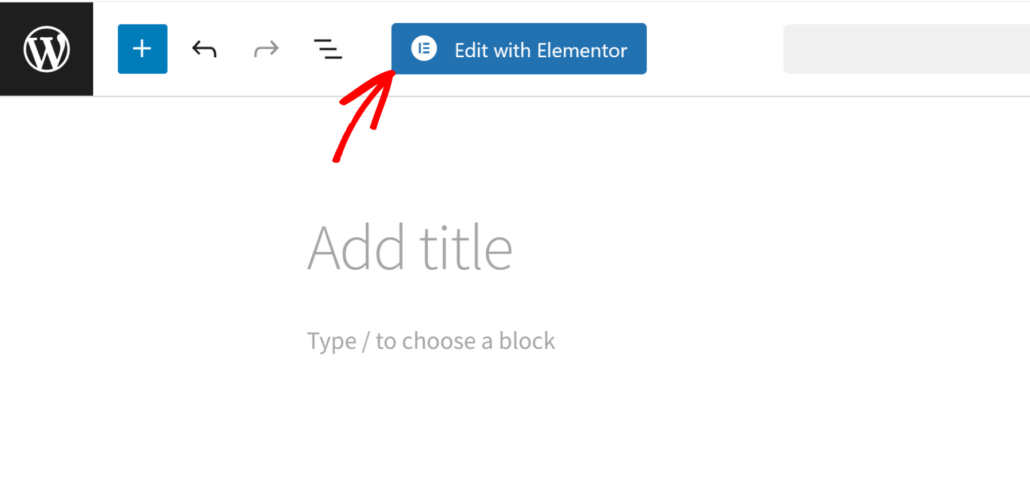
Once you’re in the Elementor page editor, scroll down to the SearchWP section from the panel on the left.
From here, simply drag and drop the SearchWP Results widget.
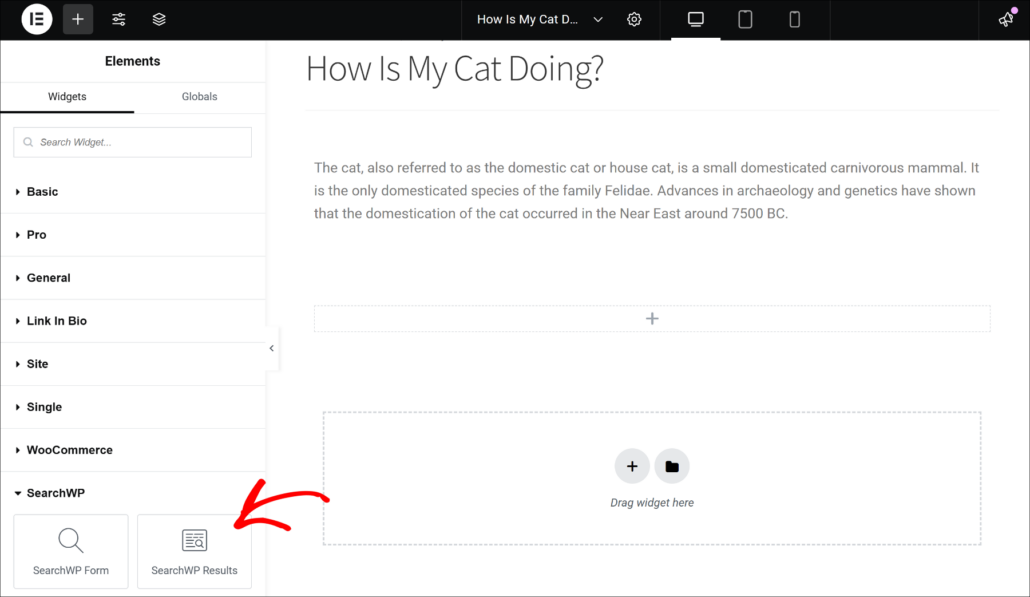
After adding the widget, you will also see options in the left panel to select a template and search engine.
However, we recommend to keep the default settings, as this way the search results will appear based on your search form settings.
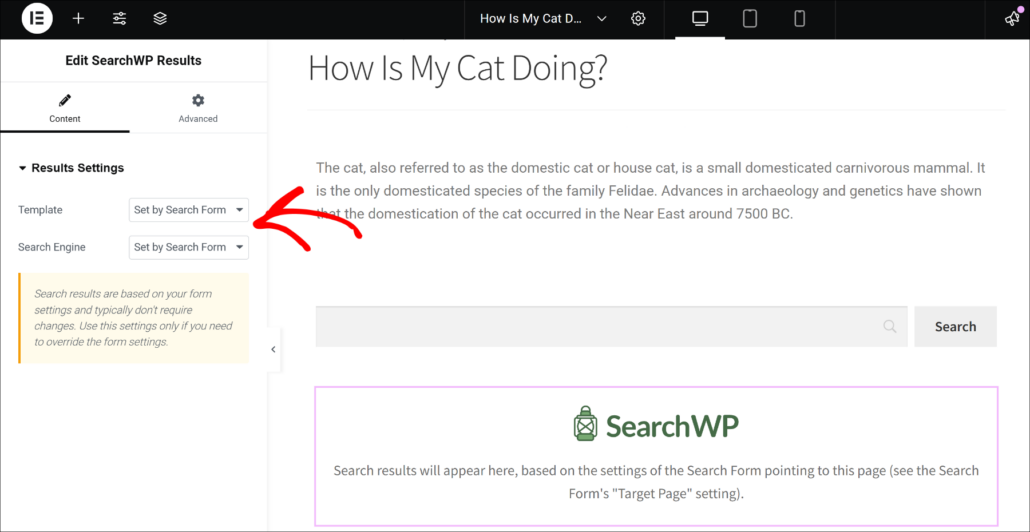
When you’re done, simply update or publish your Elementor page. That’s it. You successfully customized your search results page.
We hope this article helped you learn how to use SearchWP with Elementor to boost your site search. You may also want to see our guides on how to include shortcode results in WordPress search and how to make WordPress search in post content.
Ready to boost Elementor search on your site? Get started with the most powerful WordPress search plugin today.
